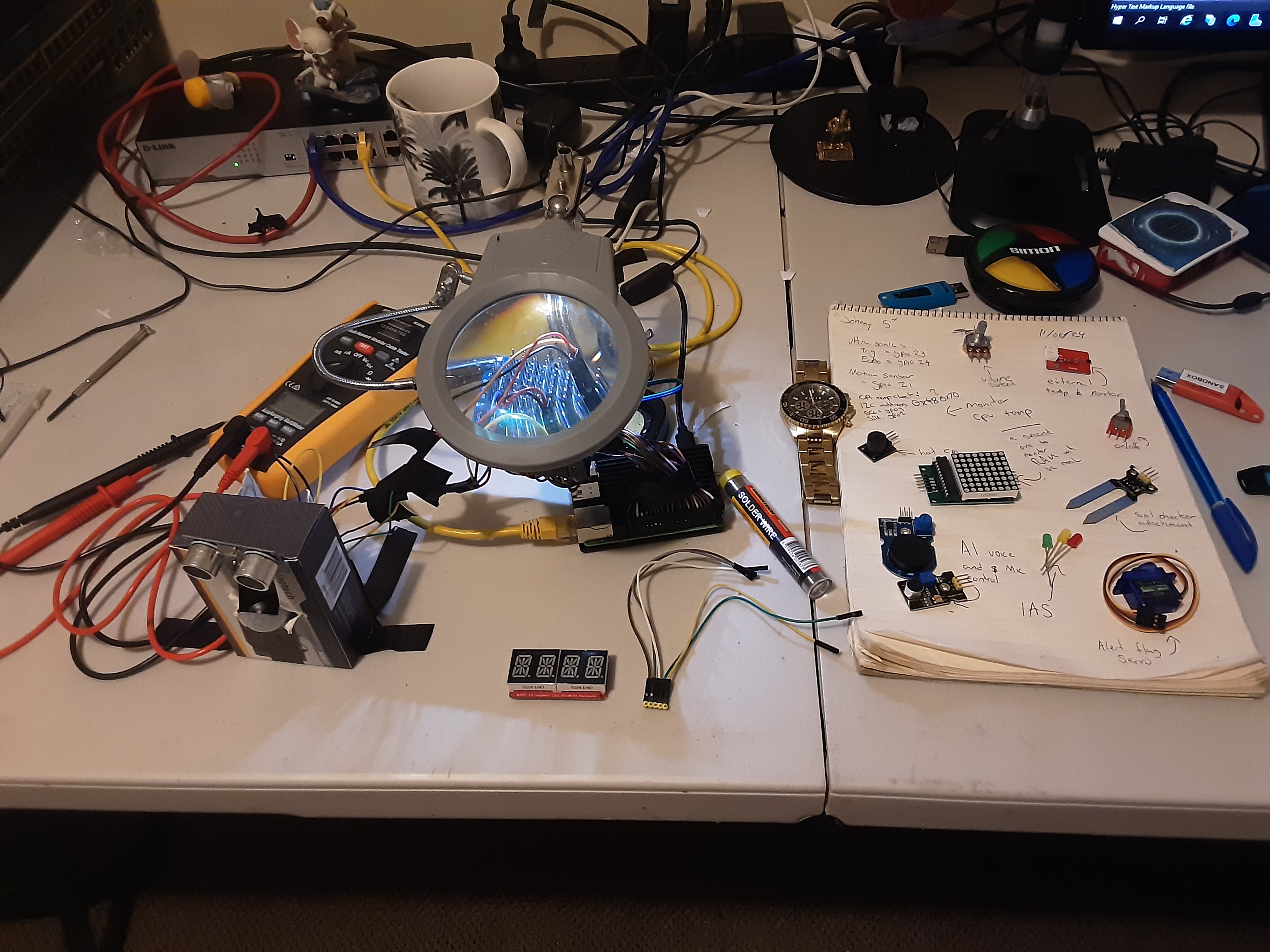Network Intrusion Alarm System Development: IAS V2.7
16/06/24 by Mr Shane Currie

Shane is proud to announce that his business has started a pet personal project in the development of a freindly AI controlled desk robot assistant that will be capable of carrying out various tasks, such as monitoring your network ports for unauthorised network activity, monitoring external weather conditions such as temperature and humidity, detection of movement with motion detection and ultrasonic frequency measurement, AI voice control and even monitoring the soil moisture condition of your desk plant.
The Intrusion Alarm System will be developed as a miniature desk robot assistant that will sit by your computer or server. The robot will be designed to grab your attention and will verbally notify the human user if it detects any suspicious activity on a network port. The robot will be designed to detect human presence at a desk and will be developed with Next Gen AI & AGI models to interact with the human user.
I purchased the electrical components for this robot locally from JayCar, the components are quite affordable. The robot will run on a Raspberry PI system using Python scripting language. OpenAI GPT4 was used to assist in building Python coding frameworks, I simply just modified and built upon the framework to customise the program to suit the robots needs.
This project is at version 2.7. I do have the ultrasonic sensor and motion detection system working however I have encountered challenges while running next gen AI models on the device due to CPU temperature concerns. I have tested the AI model Llama3 on a Raspberry Pi 4 B model with 8GB of RAM and a 1.52Ghz CPU. I have discovered that CPU temp while running the Llama3 model is exceeding 50°C.
Further expected future challenges will involve gaining access to a lightweight AI model that is able to run on the Raspberry PI without exceeding the CPU temp past the throttling zone. I will also need to load custom datasets into a lightweight AI model and train it on a higher end system.
Last year, with the IAS version 2.6 I was able to program a set of lights, that resemble traffic lights that sets off a flashing red LED light if it detects unauthorised network activity on a network port, such as port 3389 that is commonly used for remote desktop protocol (RDP), IAS version 2.6 also included a whitelist, for notifying the user when a trusted network connects to a server and also is capable of creating Windows application firewall rules.
The next stage of this project will be attaching a CPU temperature LED monitor and alert buzzer to warn me of high CPU temperatures.